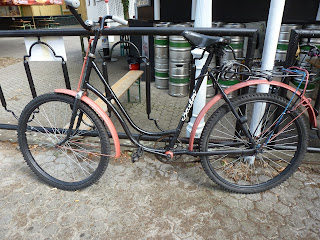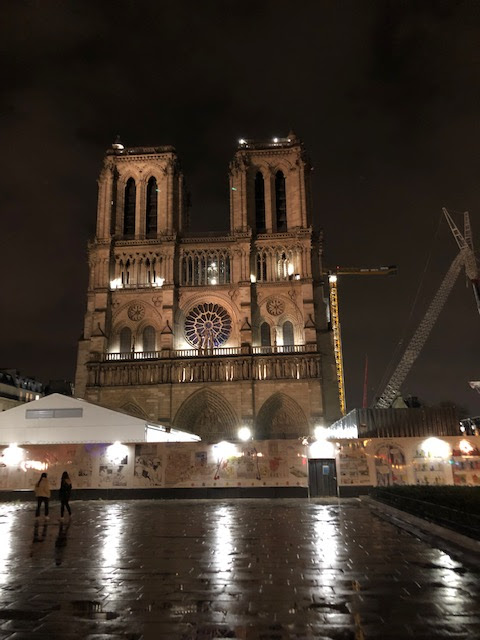So, I thought this might be a good day to talk about a bike I owned and didn't care for very much. In fact, it's part of a genre of bikes I'm not really crazy about, but not because I have anything against the genre. Rather, I find the bikes within them are all wanting.
That genre is folding bikes. I've often felt I'd like to have one, even though I'm not travelling more than a couple of times a year. Once, I did give into my curiosity and bought one: the Dahon Vitesse D5.
Part of my rationale for buying it was that I could fold it and bring it into the office I shared at the time. I was indeed able to do that, and folding the bike was easier than I expected. However, the bike was heavier than I thought it would be (I had to climb two flights of stairs to get to that office, and my classes.) though, to be fair, it may have been because of some of the things I added to it.
The bike came in a matte-black finish. It's not exactly my taste, but I think it was the only color choice available. Soon after I bought the bike, I swapped out the stock saddle for a Brooks B72 I picked up on Craig's List. That gave the bike, to which I also added a rear rack, a surprising elegance.
You've heard the term "flexible flyer." That's what some of us called certain bikes like the Peugeot PX-10E (which I'll write about in another post). Well, the Dahon was like a Broken Flyer: When it rolled, it gave a surprisingly nimble ride, albeit on what felt like a broken frame. Again, in all fairness, every folding bike I've tried--even the Brompton--felt like it was pulled apart in the middle. I suppose that if I weren't accustomed to high-quality conventional frame, I might be able to accept that quality. But, after about a year and a half of commuting and running errands on the Dahon, I was still distracted by it.
Another problem I had with the bike was its transmission. The Sturmey-Archer 5-speed hub that came with the bike was one of the most unreliable pieces of bike equipment I've ever had. I never could keep it adjusted; nor could the mechanics at the shop where I bought the bike. Someone suggested that the problem may have had to do with the fact that when the bike was folded, the shifter cable was pulled and twisted. I'm sure that was a contributing factor, but I noticed that even after adjusting the gears when the bike was unfolded, I experienced "ghost" gear changes while I was pedaling. Even changing the shifter from the twist-grip style that came with the bike to a more traditional "trigger" mechanism didn't make the shifts more accurate or smoother.
But the fact that the frame folded wasn't the only thing that made it an unsuitable ride for me. One one of the last commutes home I took on the Dahon, a small pothole I would just barely have noticed had I been riding one of my larger-wheeled bikes swallowed the front wheel and threw me off the bike--in traffic. Neither the bike nor I was damaged, and I sold the former soon afterward.
Perhaps one day I'll get another collapsible bike. But, for now, if I can't take one of my own bikes on a trip (or if doing so is overly expensive or cumbersome), I'll borrow or rent. Then I'll appreciate riding my own bikes all the more when I get home!






































